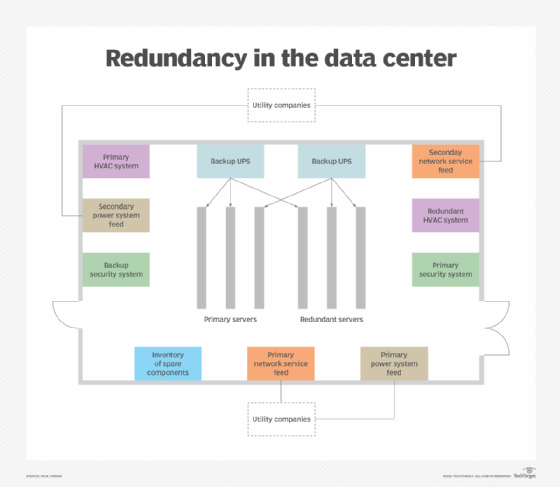What Happens to Redundancy If Company Goes Bust? An Overview to Your Rights
Wiki Article
Checking Out the Operational Dynamics of Firm Redundancy and Its Long-Term Sustainability

Redundancy Strategies for Company Connection
In order to guarantee undisturbed operations, companies have to implement effective redundancy approaches for company connection. Redundancy in this context describes the replication of critical components or features within a system to minimize the impact of potential failures. By incorporating redundancy methods, companies can enhance their resilience versus interruptions brought on by different variables such as all-natural calamities, devices failures, or cyber-attacks.
One typical redundancy strategy is the application of back-up systems and information storage options. This includes producing duplicates of necessary information and systems that can be turned on in instance of a main system failing. In addition, companies can develop repetitive communication channels and power sources to preserve connectivity and operations throughout unforeseen events.
Moreover, cross-training employees to perform numerous functions within the business can offer as a useful redundancy method. If key workers are unavailable due to illness or various other reasons, this ensures that crucial tasks can still be brought out even. On the whole, efficient redundancy strategies are crucial for organizations to maintain operational connection and reduce the effect of possible interruptions.
Impact of Redundancy on Business Resilience
Given the vital function redundancy approaches play in making certain service connection, exploring the impact of redundancy on organizational durability ends up being essential for comprehending the alternative functional characteristics of a firm. Redundancy, when strategically applied, can substantially add to boosting a company's resilience in the face of unexpected challenges.Moreover, redundancy can bolster employee morale and confidence, knowing that there are contingency strategies in area to resolve unforeseen circumstances. This sense of safety and security can lead to increased efficiency and a more positive workplace. In addition, redundancy can cultivate technology and creative thinking within a company as employees feel empowered to take computed dangers, recognizing that there is a safety web to support them in case of failure. Overall, the influence of redundancy on business durability is profound, forming the long-lasting sustainability and success of a company.
Balancing Performance and Flexibility in Redundancy
Attaining a harmonious stability between functional performance and adaptive adaptability is a critical obstacle in the tactical release of redundancy within organizations. Effective procedures are vital for keeping productivity and cost-effectiveness, making sure that sources are used ideally. However, extreme focus on efficiency alone can result in strength, making it difficult for organizations to adjust to unforeseen changes or difficulties. On the various other hand, flexibility enables companies to react nimbly to advancing situations, promoting technology and strength. Yet, too much versatility without a strong functional structure can cause inefficiencies and inconsistency.To stabilize effectiveness and adaptability in redundancy preparation, organizations have to thoroughly assess their functional needs, market characteristics, and tactical objectives. Eventually, locating the ideal equilibrium in between efficiency and versatility is essential for constructing a resilient and lasting organization in the face of unpredictability.
Long-Term Sustainability Through Redundancy Preparation
To guarantee enduring feasibility and security, companies need to purposefully straighten their redundancy preparation with long-term sustainability goals, thus balancing operational efficiency with adaptive flexibility. Companies ought to see redundancy not as a reactive solution to immediate problems yet as an aggressive approach for lasting success.
Proactive Steps for Lasting Firm Procedures
Just how can firms proactively enhance their functional sustainability for long-term success? Applying aggressive actions is crucial for firms intending to guarantee sustainable procedures.In addition, promoting a culture of continual renovation and understanding within the organization can enhance flexibility to altering market conditions and consumer demands. Encouraging staff member involvement in decision-making procedures and supplying opportunities for specialist advancement can boost spirits, productivity, and total performance. Developing clear goals, monitoring vital performance indications, and on a regular basis assessing progression are important parts of positive sustainability monitoring.
Working together with distributors, clients, and various other stakeholders to promote lasting redundancy if company goes bust practices throughout the supply chain can produce a ripple result of positive influence - redundancy pay if company goes bust. By taking proactive actions in the direction of operational sustainability, firms can build durability, drive innovation, and protect their lasting success in an ever-evolving business landscape
Final Thought

In the realm of business management, the critical implementation of firm redundancy stands as an essential yet intricate technique that necessitates a fragile balance in between operational effectiveness and long-term feasibility. By dissecting the functional characteristics that underpin company redundancy and evaluating its more comprehensive implications for business strength and versatility, a nuanced understanding of just how redundancy strategies can shape the future trajectory of a firm begins to unfold.Provided the important role redundancy approaches play in guaranteeing service connection, exploring the effect of redundancy on business strength becomes necessary for understanding the holistic operational dynamics of a business. On the whole, the impact of redundancy on organizational durability is extensive, forming the lasting sustainability and success of a firm.
In conclusion, understanding the operational dynamics of business redundancy is important for making certain lasting sustainability.
Report this wiki page